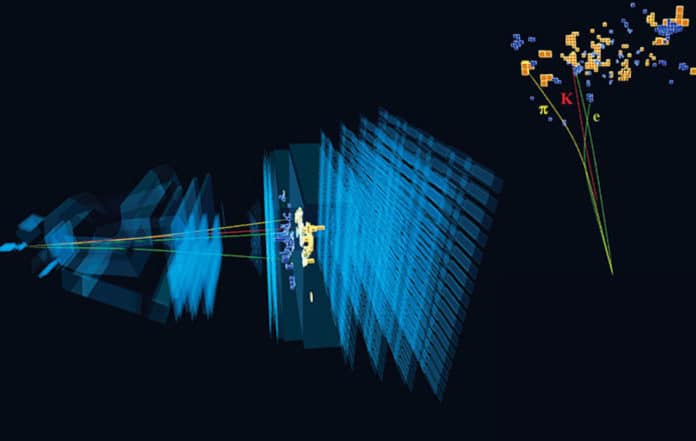The particles called beauty quarks are third-generation heavy quarks with exceptionally low transition rates to lower-mass quarks. The bottom quark is also notable because it is a product in almost all top quark decays and is a frequent decay product of the Higgs boson.
According to the Standard Model of particle physics, particles such as beauty quarks should decay into either muons or electrons in equal measure. Although this may not be happening, it suggests a new study by the LHCb Collaboration at CERN. The results indicate that particles are not behaving in the way they should.
The analysis of the study’s data was done by the physicists from Imperial College London and the Universities of Bristol and Cambridge.
The Standard Model is considered the best theory of particle physics. It explains all the fundamental particles in the Universe. It cannot explain some of the deepest mysteries in modern physics, for example, dark matter.
Thus, scientists are searching for particles that do not behave according to the standard model to explain some of these mysteries.
The new measurement addresses nature’s laws that treat electrons and their heavier cousins, muons, indistinguishably, aside from small differences due to their different masses.
According to the Standard Model, muons and electrons interact with all forces in the same way, so beauty quarks created at LHCb should decay into muons just as often as they do to electrons.
But these new measurements suggest the decays could be happening at different rates, which could suggest never-before-seen particles tipping the scales away from muons.
Imperial Ph.D. student Daniel Moise, who made the first announcement of the Moriond Electroweak Physics conference results, said: “The result offers an intriguing hint of a new fundamental particle or force that interacts in a way that the particles are currently known to science do not.
“If further measurements confirm this, it will have a profound impact on our understanding of nature at the most fundamental level.”
Dr. Mitesh Patel, from the Department of Physics at Imperial and one of the leading physicists behind the measurement, said: “We were shaking when we first looked at the results; we were that excited. Our hearts did beat a bit faster.”
“It’s too early to say if this genuinely is a deviation from the Standard Model, but the potential implications are such that these results are the most exciting thing I’ve done in 20 years in the field. It has been a long journey to get here.”
The standard model also suggests that the gold standard for discovery is five standard deviations. It means there is a 1 in 3.5 million chance of the result being a fluke. This result is three deviations—meaning there is still a 1 in 1000 chance that the measurement is a statistical coincidence. It is therefore too soon to make any firm conclusions.
Dr. Michael McCann, who also played a leading role in the Imperial team, said: “We know there must be new particles out there to discover because our current understanding of the Universe falls short in so many ways—we do not know what 95% of the Universe is made of, or why there is such a significant imbalance between matter and anti-matter, nor do we understand the patterns in the properties of the particles that we do know about.”
“While we have to wait for confirmation of these results, I hope that we might one day look back on in this as a turning point, where we started to answer to some of these fundamental questions.”
Journal Reference:
- Test of lepton universality in beauty-quark decays, arXiv:2103.11769 [hep-ex] arxiv.org/abs/2103.11769
